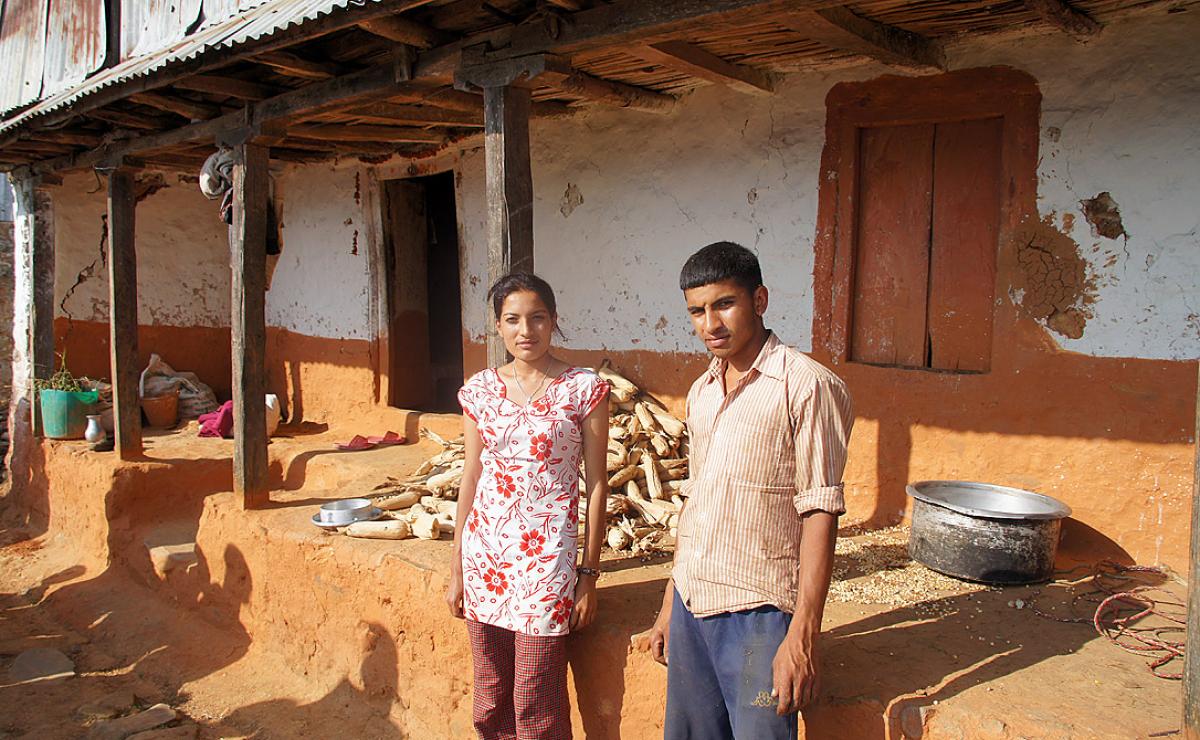The buffalos have survived

LWF journalist and participant in the 2014 Backstage Pass trek in Nepal, Cornelia Kästner, makes a return trip to the village of Devichour following the earthquake. It is in quite a different state but has been sustained by the legacy of LWF project work.
During the LWF Backstage Pass in November 2014, which saw a group of trekkers from the LWF communion visiting LWF programs in Nepal, we visited the Devichour women’s cooperative in a small mountain village of Lalitpur district. We were welcomed into the newly-built cooperative meeting hall in the traditional way with wreaths of marigolds and a big red stripe of red tikka painted on our faces.
For the next few hours we heard women talk about how the cooperative’s small loan system had changed their lives and livelihoods, and even went to visit some of their homes. I was particularly impressed by a woman named Dil Kumari, who had used a small loan to buy a buffalo and gradually used the income from the milk to buy more livestock. Proudly, she showed us a cowshed with 14 buffalos and two calves – a fortune in Nepal.
Lalitpur is one of the districts most affected by Maha Bugampa – the Great Earthquake, as it is now called throughout the country. In Devichour, one third of the houses have collapsed, another third is damaged. Other villages fared even worse: some were entirely destroyed.
I returned to Nepal in the wake of the earthquake to document the LWF’s relief efforts.
On the way to the village of Dhusel for a distribution of relief goods, the LWF team passed by the cooperative house and village of Devichour. I was relieved to see that the cooperative meeting hall, which the women had so proudly shown us, was still standing. However, the village had been severely damaged. Half the houses had collapsed, the other half bore cracks. Rubble lay in the street. Makeshift shelters made of tarpaulins bore witness to the fact that most houses were not safe anymore.
Dil Kumari was not at home when I came to see how she was. A relative had died in the earthquake so she had gone to mourn with the family. Instead I met her two grown children - twins by the names of Laxmi and Laxman, who were sitting on a badly damaged veranda. The balcony was hanging at an odd angle, the walls had large cracks, and through the open door I could see what looked like a collapsed staircase.
“We will have to take the house down,” Laxmi said. “In the rainy season, it will collapse completely. It is too badly damaged. Then we’ll have to build a new house.”
Unlike at other homes, I could not see a tarpaulin tent, though. “We are living over there,” the twins said, pointing at what looked like a second house. It was the cowshed, with a storage room above. “The buffalos have all survived,” Laxman said.
When they were asked about the cooperative’s small loan scheme, the twins said they were not sure if they would apply for a grant to rebuild the house. “Many cooperative members will have to build new houses, it might be too much to handle for the group,” a LWF staff member later told me. However, for Dil Kumari, this might not be as bad as for many other cooperative members. She could sell a cow or two to finance the rebuilding of her house.
It was good to see that, although the LWF could not prevent the suffering and devastation caused by the earthquake, our work had given more people the means to cope and recover.
Cornelia Kästner is the journalist for the LWF's Department for World Service.
Donate to the LWF Nepal Emergency

